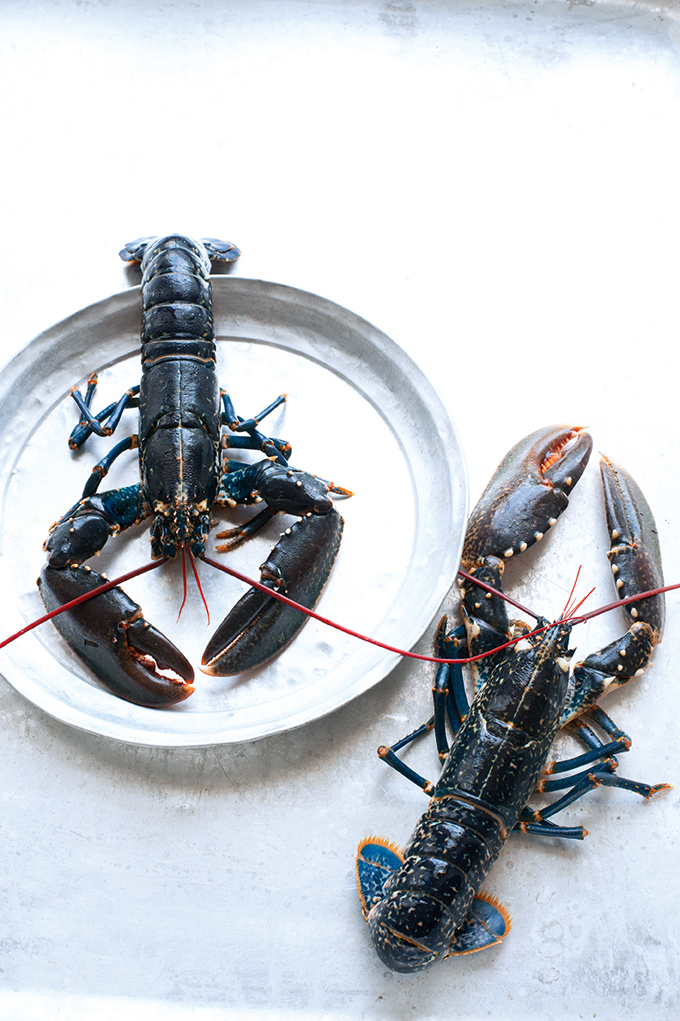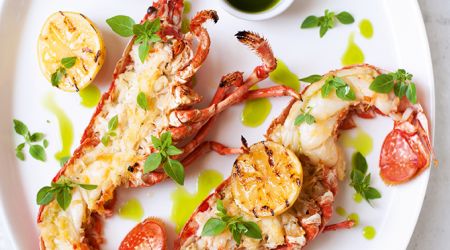Lobster -
Whether you go all-out with a decadent, Gruyère-laden Thermidor or serve it cold in a piquant Marie Rose, now’s the time to dig your claws in, says Clarissa Hyman
There is no avoiding the issue: when preparing a lobster there are really no great choices. Whichever method is chosen – slow simmer, hot plunge, precision surgery or electric shock – we are dealing with an action that can induce unease in the executioner. Such squeamishness is of course understandable, but there is an easy way to eliminate the guilt: establish theirs by putting them on trial first. It is a brilliant suggestion, first coined by the American humorist Henry Beard in the 1980s.
The fact is, the lobster is a solitary, dubious character and among the most ferocious predators on the sea bed. It is widely held to be aggressive, carnivorous, even cannibalistic, terrifying its neighbours
with a powerful abdomen, formidable, prize-fighting claws and rigid body armour. As Beard suggests, you have to look the lobster in the eye and say, ‘Where were you on the night of the 21st?’, then place a picture of an innocent scallop in front of its shifty antennae. Be careful to dodge any swipes from a waving claw and pop it in the pot. As Beard quips, ‘justice will be served as you and your guest will soon be, too’.
It used to be common restaurant practice to bring your living lunch to balefully greet you before it returned on the dinner plate, which sounds a rather uncomfortable experience. The writer Alice Thomas Ellis, however, was doubly annoyed when presented on one such occasion with an imposter, which had clearly been dead and frozen for some time. Despite the fact the lobster consists of far more shell than meat, it has been a prized food for centuries, synonymous with grand and privileged lifestyles. Famously, the chef François Vatel, when informed the lobsters intended for a sauce had not been delivered at an important banquet for the court of Louis XIV, considered himself totally disgraced and literally fell upon his sword. Lobsters live in cold water and prefer rocky ground, so are traditionally caught in special pots or creels baited with pungent fish scraps. As the water warms up in summer, they move into shallower coastal water, so catches are higher at this time of the year. Males tend to have larger claws than females but the latter have a reputation for being tastier. In the South West of England only mature lobsters may be landed, and fishermen cannot land breeding or ‘berried’ (egg-carrying) females. Sadly, lobsters can be overfished as by-catch from nets in other parts of the British Isles as well as in Mediterranean and Scandinavian waters. Lobster ranching is less developed than other forms of shellfish farming because of their pugnacious tendencies; it is also the reason their pincers are held closed with rubber bands when they are put in a vivarium, otherwise they are likely to start a lobster bar brawl.
There are two main varieties of lobster: the European and the Canadian/American, with Maine having the PR edge. The ‘Scottish’ lobster has a speckled blue-black shell and the North American tends to sport a more uniform, greener colour. Both turn brick-red when cooked, and opinions vary on which is finer. I shall refrain from exacerbating transatlantic discord.
Cooking lobsters alive is not mere gastronomic pedantry or sadism: it is because once dead, the flesh deteriorates rapidly and can become toxic. Flavour also deteriorates once they are taken from the sea – and hanging around in tanks does them no favours, either. The method of dispatch remains controversial: Switzerland recently announced a ban on boiling lobsters alive. The RSPCA believe lobsters are sentient and says electrical stunning before killing is the most humane way.
Ready-cooked whole lobster can also provide a challenge to the chef. To extract the meat involves confident knife skills and strong implements to split open the body and crack the claws. The white flesh is the most favoured but although the greenish liver, or tomalley, may not look appetising, it is one of the most delicious and rich parts.
Sweet and meaty lobster still makes the diner feel both flash and flush, and classically it lends itself to fancy, showy dishes such as Newburg, a l’Américaine (armoricaine) and Thermidor. Many, however, would agree with Elizabeth David’s view that plain, freshly boiled lobster served either hot or cold is always superior. An extra dimension may be added with flavoured mayonnaise and herb butters or citrus, herb and fruit salads. A lobster bisque is still the epitome of opulent luxury.
To end on a you-couldn’t-make-it-up note: the story goes the British used small lobster boats as a military cover in the Channel during the Second World War. The sailors used rubber lobsters, which they hauled in and out of the water. The only problem was, the manufacturers of these facsimiles had painted them lobster red. Probably like the colour of their faces.

Recipes
Get Premium access to all the latest content online
Subscribe and view full print editions online... Subscribe




